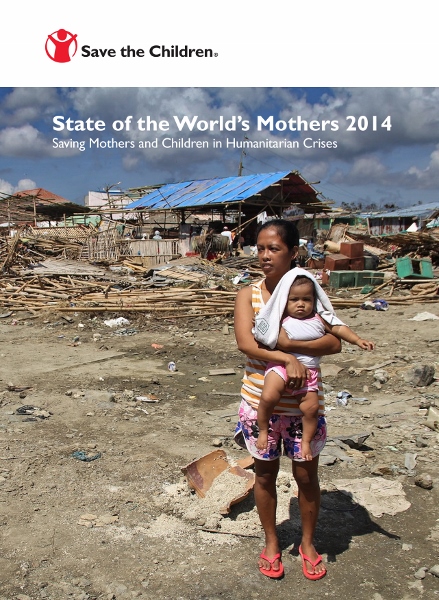Save the Children’s 15th annual State of the World’s Mothers report
Laos is ranked 129th on Save the Children’s 2015 Mothers’ Index – an annual ranking of the best and worst places in the world to be a mother. Despite steady improvement, this represents a fall of eight spots on the index, from 121st place in 2013. The country remains ahead of neighbours Cambodia and Myanmar, but trails other regional neighbours such as Thailand, Vietnam and Malaysia.
The index is a part of the children’s aid agency’s annual State of the World’s Mothers report, now in its fifteenth edition, comparing 178 countries around the globe, showing which are succeeding – and which are failing – in saving and improving the lives of mothers and their children. Overall, Finland was ranked the best place to be a mother for the second straight year and Somalia came in last.
The report shows that maternal and child mortality in the most challenging countries of the world can be dramatically cut when efforts are made to improve services for mothers and children. Over the past 15 years, Laos has seen maternal mortality cut by almost two-thirds, child mortality decreased by 40 percent, expected years of schooling increased by 2 years, and gross national income per capita increase more than four-fold.
The Mothers’ Index uses five indicators to measure a mother’s well-being, including maternal mortality, child mortality, years of formal education, gross national income per capita and participation of women in national government.
“Laos has made tremendous progress in maternal and child health over the past 15 years, despite its status as a least developed country,” says Olivier Franchi, country director for Save the Children in Laos. “But we should also be concerned about the dip in its rankings, which is caused by other countries improving at a faster rate than Laos. Continued investment in child survival - MDG 4 – is necessary. “
As well, improvements in child survival and maternal health rates are evident but they also mask huge disparities in terms of maternal and child well-being. Laos, less than 5 per cent of the poorest quintile have trained help when they deliver their babies, compared to 90 per cent in the richest quintile. Save the Children has supported the training of nearly 250 midwives and skilled birth attendants over the past three years, but there still remains much work to do.”
Globally, nearly half of the 6.6 million children dying each year die because their bodies are so weak from lack of the right nutrients to fight off common illnesses. Many babies are born small as a direct result of malnourished mothers, which highlights the critical importance of better nutrition for women and girls. Children who are stunted at a young age will not develop mentally and physically as they should, making it even harder for them to break out of the poverty cycle.
Breast milk is widely regarded as one of key solutions to protecting infants from stunting. It is the single best source of food and nutrients for any infant – breastfed babies are less likely to be malnourished, have stronger immune systems, less susceptible to obesity and diabetes later in life, and have a higher IQ than non-breastfed babies. “We look forward to the developmet of the national nutrition law to safeguard and support women’s rights to breastfeed”, said Mr Franchi.
This year’s State of the World’s Mothers report focuses on mothers in humanitarian crises in order to better understand and respond to their needs. Mothers in humanitarian crises are often faced with many obstacles to keep their children healthy – such as physical and economic access to essential services – while their own vulnerability to poverty, malnutrition, sexual violence, unplanned pregnancy and unassisted childbirth greatly increases.
“Laos is vulnerable to annual seasonal floods, which has become more severe in recent years with climate change. It has caused widespread losses in crops, livestock and damages to other assets such as tractors in the worst-affected areas, which in turn can cause a spike in malnutrition, school dropouts, and a decrease in usage of paid health services,” said Olivier Franchi.
To protect mothers and children in the aftermath of disasters, Save the Children is calling upon States, donors and civil society to:
- Build stronger institutions that promote early action, social protection, and disaster risk reduction;
- Build strong health systems that provide universal health coverage and provide for the most vulnerable;
- Ensure access and the right to quality healthcare; and invest much more in women and girls and ensure their protection;
- Design emergency interventions with a longer-term view and the specific needs of mothers and newborns in mind.

 Laos
Laos